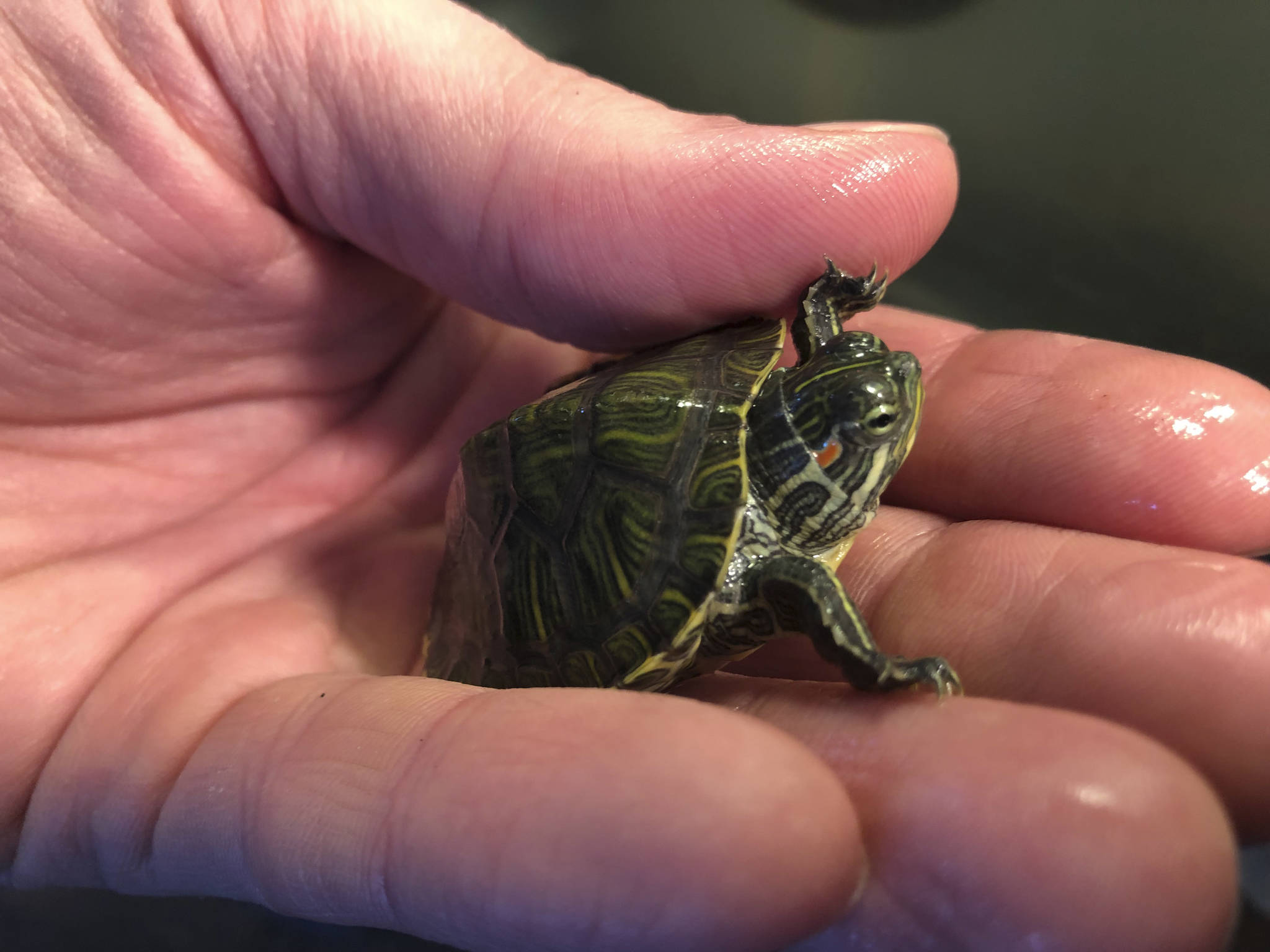Ecologist Christian Oldham has long seen the benefits of using live animals to teach kids about the natural world.
As a staff member of conservation biology laboratory Kwiaht, Oldham has been caring for and using reptiles as part of the organization’s education and outreach program. Last year, he launched a reptile zoo at Camp Orkila, which is available to campers as well as the public.
“Everyone loved it,” Oldham said. “It’s one thing to do a PowerPoint but it’s a whole other thing to put the animals in people’s hands.”
Kwiaht partnered with Orkila to establish and maintain the collection, which represents animals that are native to the San Juans. Both organizations supply equipment and the camp houses the zoo. Oldham applied for a scientific collection permit from the Washington Department of Fish and Wildlife to begin collecting live native reptiles and amphibians last year, and he hopes to continue to grow his offerings.
The zoo has salamanders, frogs, a snake, a lizard and a turtle named Gumbo. Some of them are friendly enough to be fed by hand. On the exotic side, there is a pale-pink axolotl, which is a fully aquatic salamander that hails from Mexico. Given the name of Jeffrey, he has feathery external gills and a large tail. Axolotls are an example of how baby salamanders look before they metamorphose into adults. The reptiles and amphibians eat a variety of items, including slugs, worms, salmon pellets and dubia roaches, which Oldham raises in colonies.
The animals will be available for viewing by April 1. Oldham is currently building new custom interiors for the tank, which came from the Exchange. Each habitat will fit the needs of the animal while also providing visibility to viewers. There will be waterfalls, pumped water, caves, rocks and wood. Anyone interested in checking out the zoo can contact Oldham at christian.oldham@kwiaht.org.
“The goal is to make it accessible without having to always open the tanks and handle the animals,” he said.
The objective of the collection is to inform the public about the life stages of reptiles and amphibians and their role in ecosystems. “Orkila instructors use the animals in teaching local day camp and regional school groups about ecology,” he said. “I help with staff training, maintain the collection and use it for in-school programs, and plan to incorporate its use in public programs that I present.”



